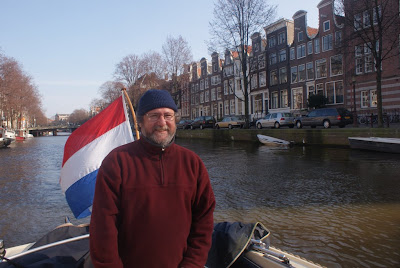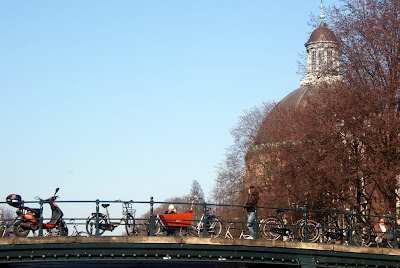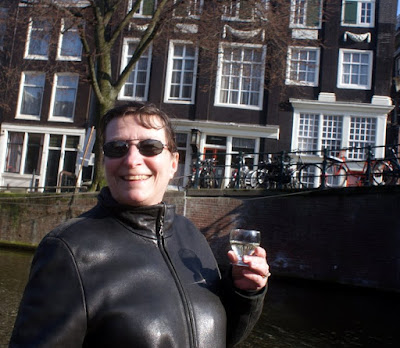It’s been a busy week. When I went with Marike to De Nieuwe Kerk last week to see some works by Anton Heyboer among the exhibit from the Stedelijk Museum, I bought annual museum passes for John and me. If I’d known about them then, I would have bought them when we first arrived, but we still have most of two months left in The Netherlands, and the passes are good throughout the country for over 300 museums. We’ve made a list of the museums in Amsterdam that we’d like to visit/revisit, and we’ll be seeing at least two a week this month.
This week we went to the Allard Pierson Museum (the archeological museum of the University of Amsterdam) and the Rembrandt House Museum. Both were excellent, and we’re really glad we didn’t miss them. The Egyptian collection at the Allard Pierson was especially impressive. At the Rembrandt House, there was an American (or perhaps Canadian) demonstrating printing from etchings. Our tastes in art run more to the modern, but there were hundreds of paintings and etchings in the house from Rembrandt’s time. And the audio tour was free, so we had a good idea what we were seeing.
This is Dutch Restaurant Week, and Mom gave us money for a dinner out for Christmas, so we combined the two. I made our reservations weeks ago, and even then, I was almost too late. All of the participating restaurants offer three-course dinners for €25, so for some of the restaurants, it’s an extraordinarily good deal. The only Michelin-starred restaurant on the list was already sold out, but I found a little place in our neighborhood to try (Restaurant PS), and it was really good.
Our first course included a little cauliflower soup with cilantro, a beet and beet green salad with balsamic vinaigrette, and a crostini with crème fraîche, salmon and capers. Before that, though, they brought us slices of lovely warm bread to go with the butter, pimento salsa, and pesto that were already on the table. Although the salsa and pesto were yummy, we both really enjoyed the simple bread and butter.
We had a choice between fish and lamb for our entrée, and since we’d been eating fish the past couple of days, the decision was easy: rack of lamb. The four-rib rack was served resting against a potato, carrot and onion dish that reminded us of Dutch hutspot, except that the vegetables were thinly sliced and baked like scalloped potatoes instead of being mashed together. A nice touch, we thought. There were also peeled cherry tomatoes and fresh green asparagus, our first of the season, and, of course, a tasty sauce for the lamb.
For dessert, I had the cheese plate and John had the sweet. His sweet was a white chocolate tart with dried fruit and nuts served with an amazing dark chocolate amaretto sorbet. He gave me bites and let me finish the sorbet when he was full. My cheese plate had a variety of breads and crackers with four cheeses. I’m terrible about remembering the names, but there was a nice soft one, a medium soft one, a hard one, and Shropshire Blue. (English cheese that we’ve had before is easier to remember.) The Shropshire was especially good on the slightly sweet fig bread.
The restaurant was pretty, the service was good, and we enjoyed ourselves very much. I must say, though, that Ria van Gerwen’s dinner was more elegant. That one will be hard to beat.













